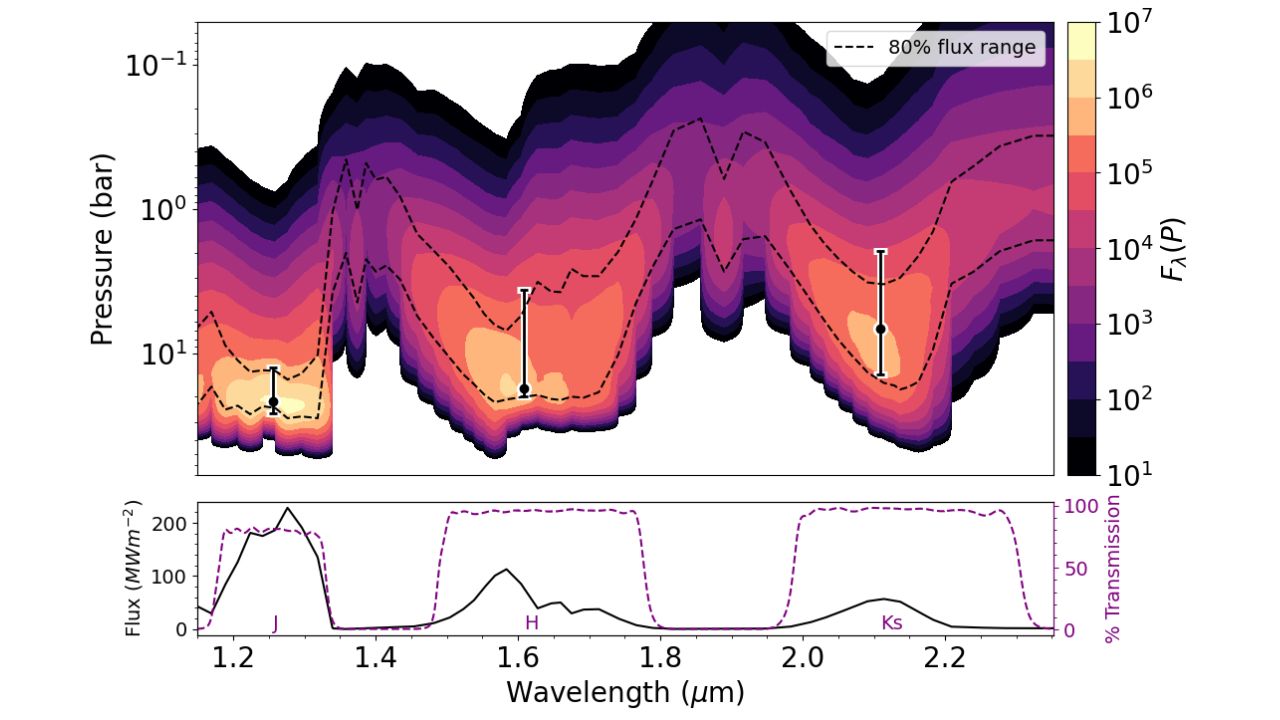Recent Papers
First Author Publications
- The JWST Weather Report from the Isolated Exoplanet Analog SIMP 0136+0933: Pressure-Dependent Variability Driven by Multiple Mechanisms
- Multiple Patchy Cloud Layers in the Planetary Mass Object SIMP0136+0933
- The JWST weather report from the nearest brown dwarfs I: multiperiod JWST NIRSpec + MIRI monitoring of the benchmark binary brown dwarf WISE 1049AB
- The Perkins INfrared Exosatellite Survey (PINES). II. Transit Candidates and Implications for Planet Occurrence around L and T Dwarfs
- The Perkins INfrared Exosatellite Survey (PINES) I. Survey Overview, Reduction Pipeline, and Early Results
Current Research Resources
Find out more about my current research here!
Previous Presentations
View my previous posters below!
Research
Boston University
I am working in the low-mass star group lead by Prof. P. Muirhead at Boston University. I am a member of the PINES (Perkins INfrared Exosatellite Survey) Collaboration, a search for transiting exosattelites (exoplanets or exomoons).
My work focuses on the physical mechanisms driving L and T dwarf variability. L and T type dwarfs are known to be photometrically variable, and it is believed that early L objects variability is caused by magnetic spots on the surface, while late L and T type dwarfs variabilty is caused by a cloudy atmosphere. Multiwavelength studies can provide insight into the atmosphereic structure of these objects. Since different wavelengths can probe different pressures (different depths), we can gain insight into the vertical atmospheric structure of the object.

Multi-wavelength photometry of brown dwarfs and planetary-mass objects provides insight into their atmospheres and cloud layers. We present near-simultaneous J−and Ks−band multi-wavelength observations of the highly variable T2.5 planetary-mass object, SIMP J013656.5+093347. We reanalyze observations acquired over a single night in 2015 using a recently developed data reduction pipeline. For the first time, we detect a phase shift between J−and Ks−band light curves, which we measure to be 39.9∘+3.6 −1.1. Previously, phase shifts between near-infrared and mid-infrared observations of this object were detected and attributed to probing different depths of the atmosphere, and thus different cloud layers. Using the Sonora Bobcat models, we expand on this idea to show that at least two different patchy cloud layers must be present to explain the measured phase shift. Our results are generally consistent with recent atmospheric retrievals of this object and other similar L/T transition objects.
The American Museum of Natural History
In the summer of 2019, I had the privilege of completing an REU with the Brown Dwarfs in New York City (BDNYC) group at the American Museum of Natural History (AMNH). Here, I worked with Prof. Kelle Cruz, Dr. Jackie Faherty, and Dr. Johanna Vos to determine the rotation rates of 26 brown dwarfs from the Kepler 2 mission. Typically, brown dwarfs and low mass stars are observed in the infrared, since that is the wavelength that the objects are brightest in. We wanted to see if it was possible to detect variability, and therefore rotation rates, using optical observations, and determine how the lightcurves compared to their infrared counterparts. Out of the 26 objects, I was able to detect two rotation rates, both of which matched previously detected rotation rates in the infrared. For one of these objects, I was able to determine the light curve evolution. I presented this research at the American Astronomical Society winter meeting in 2020 and was awarded a Chambliss Astronomy Achievement Award Student Prize for my presentation.